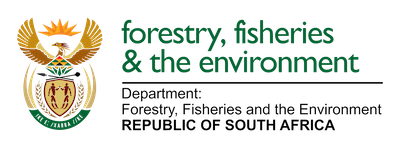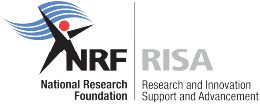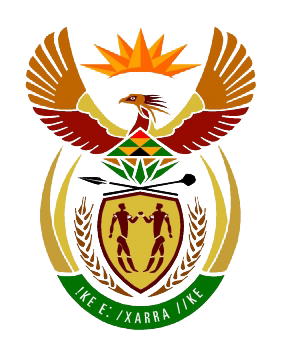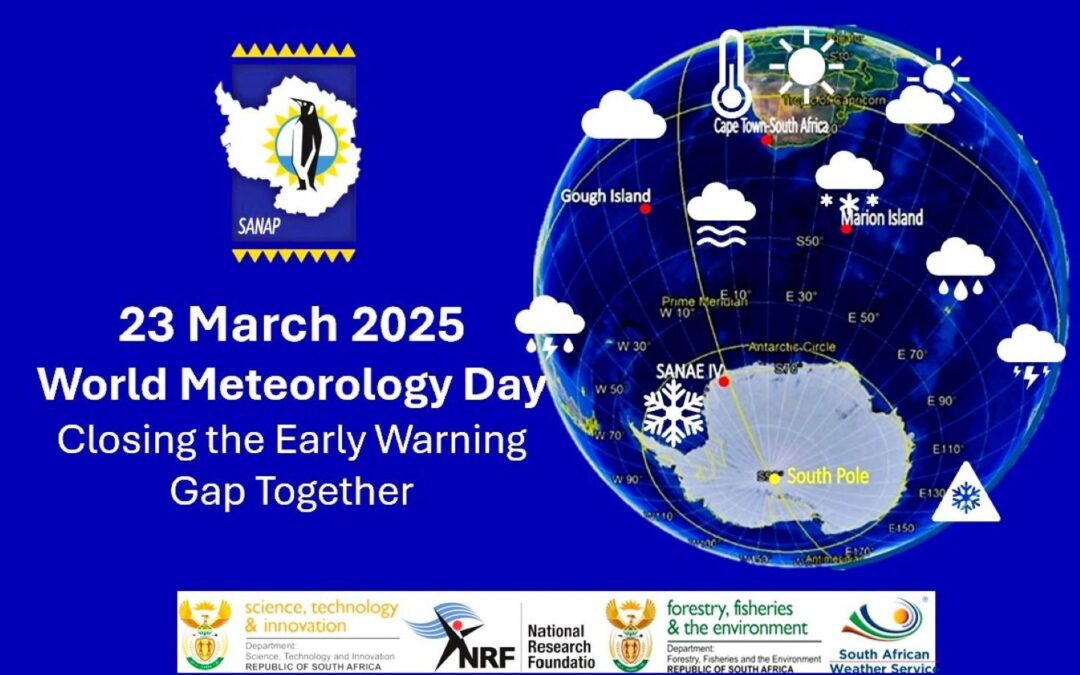
by Ria Olivier | Mar 23, 2025 | Antarctica, Gough Island, International Days, Marion Island, Meteorology, Overwintering Team, Research

 Each year, on March 23rd, the global community observes World Meteorological Day, commemorating the establishment of the World Meteorological Organization (WMO) in 1950. This day highlights the pivotal role meteorology plays in ensuring the safety and well-being of societies worldwide. In 2025, we focus on the indispensable contributions of meteorologists stationed at the South African National Antarctic Programme’s (SANAP) remote research stations: SANAE IV in Antarctica, Marion Island, and Gough Island.
Each year, on March 23rd, the global community observes World Meteorological Day, commemorating the establishment of the World Meteorological Organization (WMO) in 1950. This day highlights the pivotal role meteorology plays in ensuring the safety and well-being of societies worldwide. In 2025, we focus on the indispensable contributions of meteorologists stationed at the South African National Antarctic Programme’s (SANAP) remote research stations: SANAE IV in Antarctica, Marion Island, and Gough Island.
 On this World Meteorological Day, we extend our gratitude to the meteorologists of SANAP’s overwintering teams. Their unwavering commitment and resilience in some of the most challenging environments ensure that we continue to deepen our understanding of Earth’s atmospheric processes, ultimately contributing to the safety and well-being of societies worldwide.
On this World Meteorological Day, we extend our gratitude to the meteorologists of SANAP’s overwintering teams. Their unwavering commitment and resilience in some of the most challenging environments ensure that we continue to deepen our understanding of Earth’s atmospheric processes, ultimately contributing to the safety and well-being of societies worldwide.
 SANAE IV (South African National Antarctic Expedition IV): Located at 71°S, 2°W in Antarctica, SANAE IV. Meteorological observations are conducted year-round, providing critical data on atmospheric conditions in this remote region.
SANAE IV (South African National Antarctic Expedition IV): Located at 71°S, 2°W in Antarctica, SANAE IV. Meteorological observations are conducted year-round, providing critical data on atmospheric conditions in this remote region.
Marion Island: Situated at 46°S, 37°E in the Southern Indian Ocean. The island’s meteorological station collects essential weather data, contributing to climate studies and aiding in the understanding of global weather patterns.
Gough Island: Located at 40°S, 9°W in the South Atlantic Ocean, Gough Island has hosted a South African weather station since 1956. The station conducts hourly climate observations and upper-air ascents, playing a crucial role in monitoring weather systems that can impact South Africa.
Meteorologists assigned to these stations undertake year-long deployments, known as overwintering periods, during which they perform several critical functions:
Surface Observations: Conducting regular measurements of temperature, humidity, wind speed, and other atmospheric parameters to monitor and document local weather conditions.
Upper-Air Observations: Launching weather balloons equipped with instruments to collect data on atmospheric pressure, temperature, and humidity at various altitudes, which is vital for understanding weather patterns and forecasting.
Equipment Maintenance: Ensuring that all meteorological instruments and equipment are calibrated and functioning correctly to maintain the accuracy and reliability of collected data.
Data Management: Recording, analyzing, and transmitting collected meteorological data to the South African Weather Service (SAWS) and other relevant organizations for use in weather forecasting and climate research.
The data collected by SANAP’s overwintering meteorologists contribute significantly to:
Weather Forecasting: Providing accurate and timely data that enhance the precision of weather forecasts, benefiting maritime navigation, aviation, and local communities.
Climate Research: Offering valuable insights into climate variability and change, particularly in the understudied southern hemisphere regions.
Environmental Monitoring: Supporting studies on the interactions between the atmosphere and the unique ecosystems of Antarctica and the sub-Antarctic islands, aiding in the conservation of these fragile environments.
by Fishgate@sanap | Mar 19, 2025 | Announcement, Antarctica, News
Links to the Department of Forestry, Fisheries & the Environment’s response to the Sunday Times article on Antartica
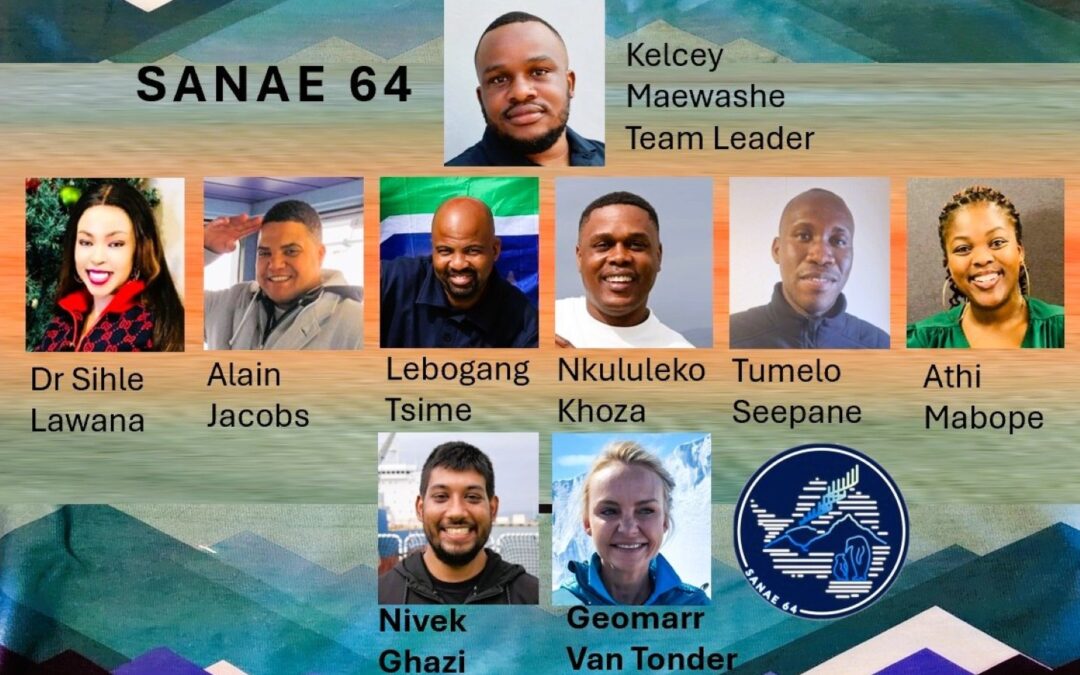
by Ria Olivier | Feb 11, 2025 | Announcement, Antarctica, Overwintering Team, SANAE
The South African National Antarctic Programme (SANAP) proudly announces the members of the SANAE 64 Overwintering Team, who will be stationed at the SANAE IV research base in Antarctica for the 2024-2025 season. These dedicated individuals will brave the extreme conditions of the Antarctic winter, conducting essential scientific research and maintaining the operations of the base. (Image below taken at Cape Town Harbour before leaving for SANAEIV)
 Meet the SANAE 64 Team
Meet the SANAE 64 Team
The SANAE 64 team comprises experts from various disciplines, including meteorology, engineering, medicine, and communications. Each member plays a crucial role in ensuring the success of South Africa’s Antarctic research programme.
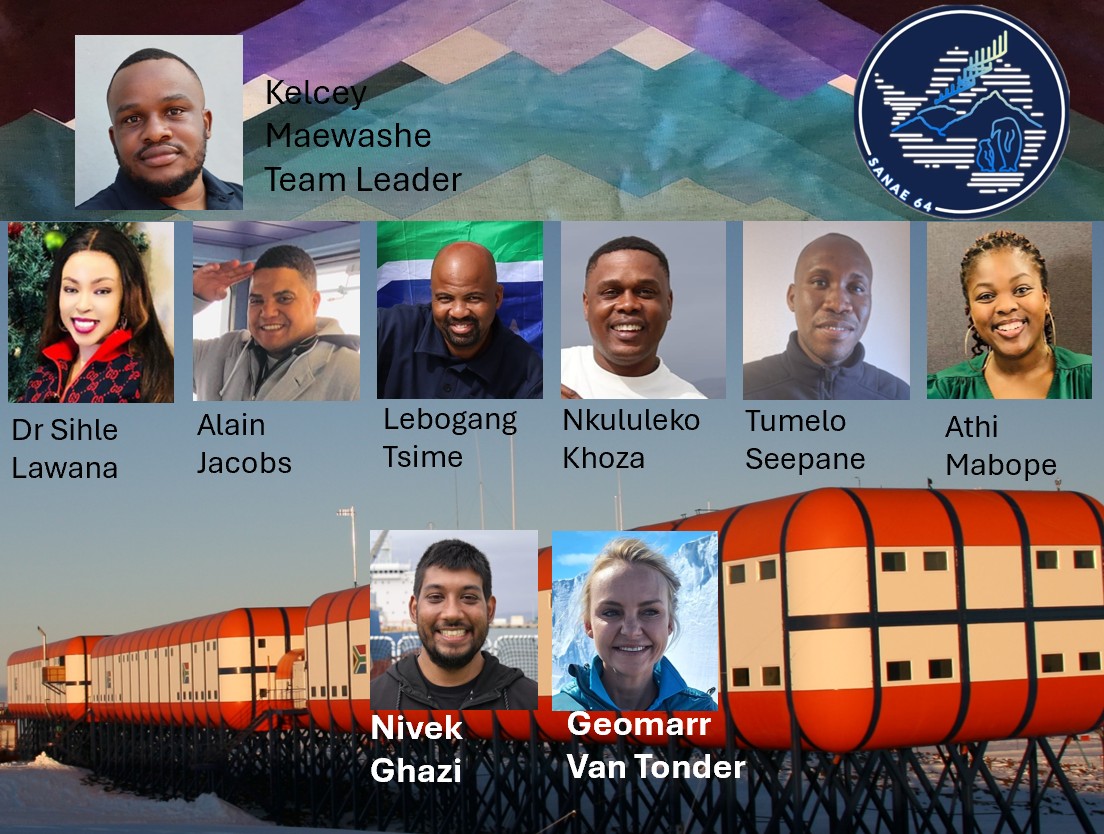 SNR Meteorological Technician / Team Leader: Mbulaheni Kelcey Maewashe – SAWS
SNR Meteorological Technician / Team Leader: Mbulaheni Kelcey Maewashe – SAWS
Electronics Engineer /Deputy Team Leader: Nivek Ghazi – SANSA
Medical Doctor: Dr Sihle Mpho Lawana – DFFE
Mechanical Engineer: Nkululeko Welcome Khoza – DFFE
Communications Engineer: Athenkosi Mabope – DFFE
Electronics Engineer: Geomarr van Tonder – SANSA
Instrumentation Technician: Allowed Tumelo Seepane –DFFE
Diesel Mechanic: Alian Stuart Jacobs – DFFE
Electro Mechanical Engineer: Lebogang James Tsime –DFFE
The SANAE 64 team will continue vital research initiatives, including climate monitoring, atmospheric studies, and geological surveys. They will also ensure the maintenance and functionality of the SANAE IV base throughout the long winter months. Overwintering in Antarctica is both a privilege and a challenge. The team will face months of extreme cold, isolation, and 24-hour darkness during the winter period. Their resilience, teamwork, and dedication are essential in continuing South Africa’s scientific contributions to global research efforts.
Follow Their Journey
Throughout their mission, the SANAE 64 team will provide updates on their work and experiences in Antarctica. Follow SANAP on social media and stay tuned for insights into life at SANAEIV.
We wish the SANAE 64 team a successful and safe expedition on this incredible journey!

by Ria Olivier | Jan 17, 2025 | Announcement, Antarctica, Gough Island, Marion Island, Prince Edward Islands, SA Agulhas II, SANAE, SANAP, Southern Ocean

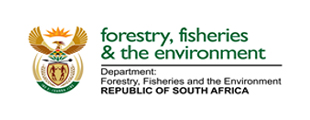 The Department of Forestry, Fisheries and the Environment is pleased to announce the upcoming voyage schedule for the S.A. Agulhas II for the 2025/2026 season. This state-of-the-art polar research and supply vessel will continue its vital role in supporting South Africa’s research stations in Antarctica and the sub-Antarctic islands. Below is the planned itinerary provided by the Department of Forestry Fisheries and the Environment:
The Department of Forestry, Fisheries and the Environment is pleased to announce the upcoming voyage schedule for the S.A. Agulhas II for the 2025/2026 season. This state-of-the-art polar research and supply vessel will continue its vital role in supporting South Africa’s research stations in Antarctica and the sub-Antarctic islands. Below is the planned itinerary provided by the Department of Forestry Fisheries and the Environment:
 DOWNLOAD PDF Voyage Schedule 2025-2026
DOWNLOAD PDF Voyage Schedule 2025-2026
DOWNLOAD PDF Voyage Schedule 2026 – 2027
Please note that these dates are subject to change based on operational requirements and weather conditions. For the most up-to-date information, please refer to the official voyage schedule on the South African National Antarctic Programme (SANAP) website.
SANAP
We look forward to another successful season of exploration and research, furthering our understanding of these remote and vital regions.
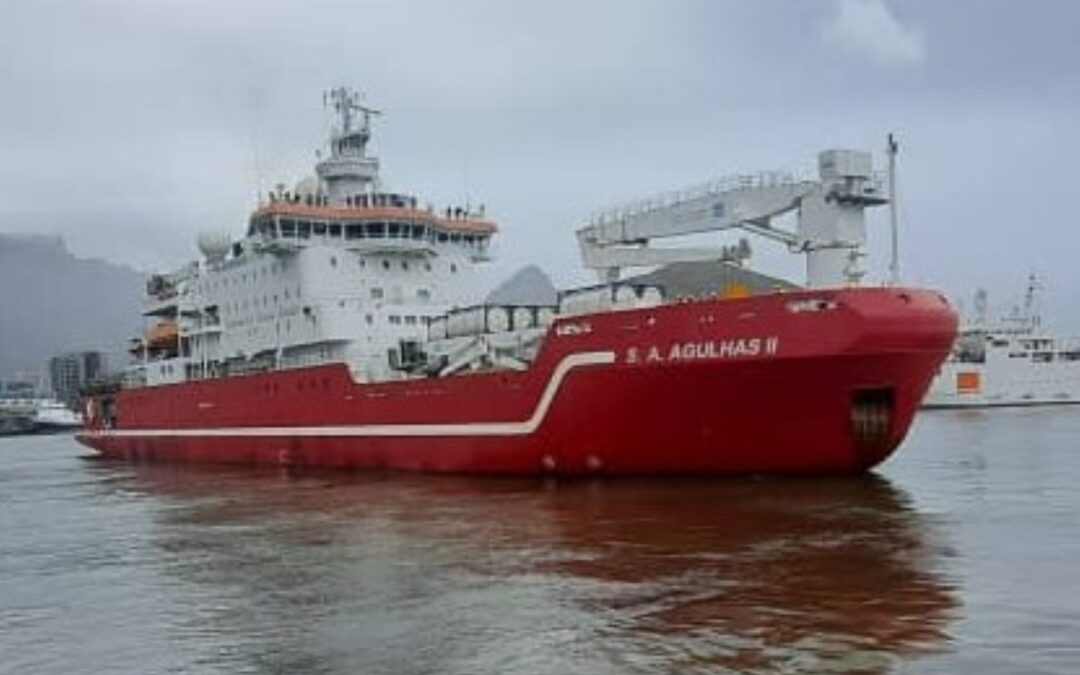
by Ria Olivier | Dec 17, 2024 | Antarctica, SA Agulhas II, SANAE, Take-Over Operations
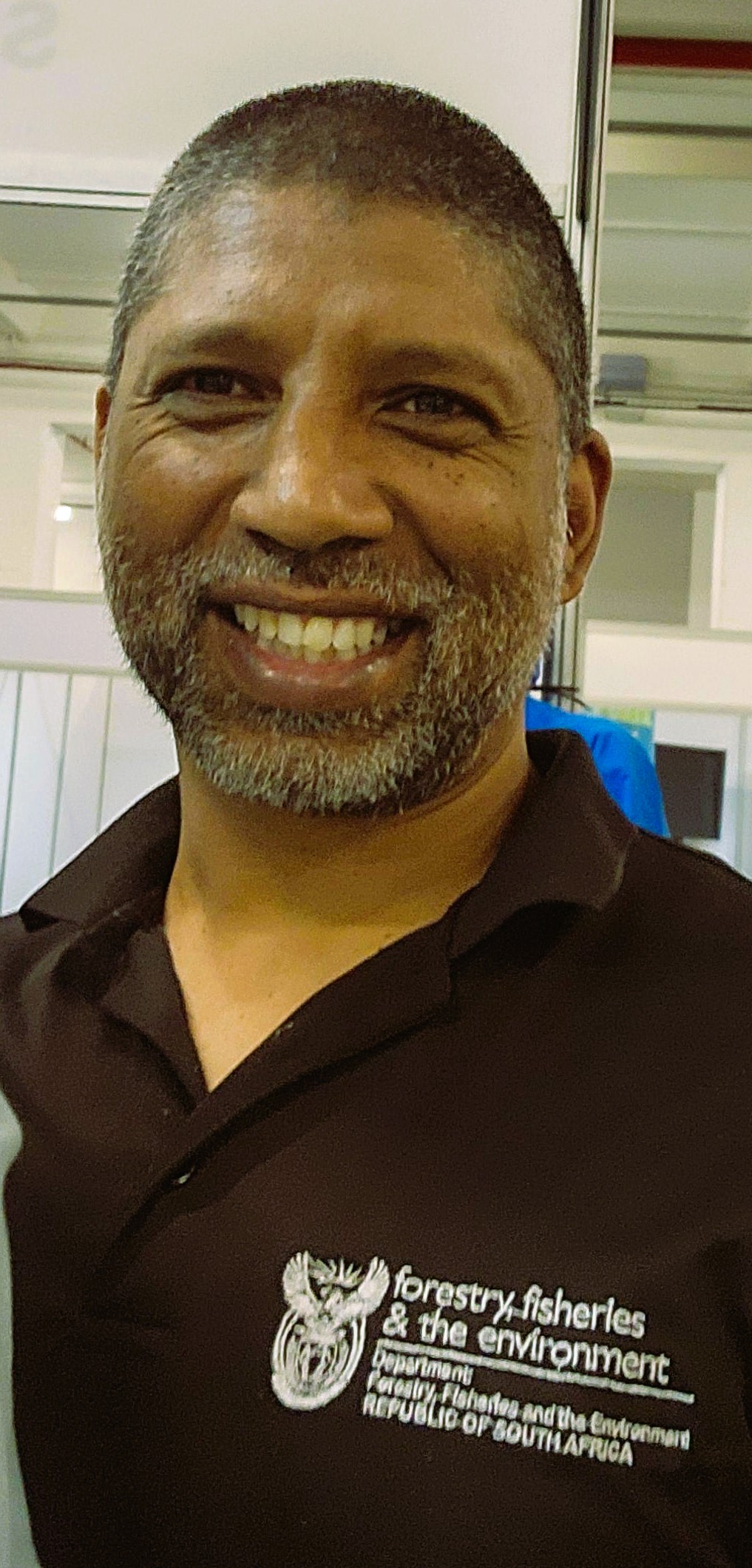 Every year, the South African vessel, the SA Agulhas II, embarks on a journey to Antarctica, marking the beginning of its annual research and supply voyage. This critical mission is not only a symbol of South Africa’s dedication to scientific research but also a lifeline for the overwintering team, personnel rotations, and vital logistical support for stations on the frozen continent. On the 15th of December, the SA Agulhas II departed from Cape Town, South Africa, bound for Antarctica. This voyage marks the commencement of a multifaceted operation, which encompasses research, supply deliveries, and personnel exchanges between Antarctica and the rest of the world. Left: Shiraan Watson DCO of DFFE
Every year, the South African vessel, the SA Agulhas II, embarks on a journey to Antarctica, marking the beginning of its annual research and supply voyage. This critical mission is not only a symbol of South Africa’s dedication to scientific research but also a lifeline for the overwintering team, personnel rotations, and vital logistical support for stations on the frozen continent. On the 15th of December, the SA Agulhas II departed from Cape Town, South Africa, bound for Antarctica. This voyage marks the commencement of a multifaceted operation, which encompasses research, supply deliveries, and personnel exchanges between Antarctica and the rest of the world. Left: Shiraan Watson DCO of DFFE
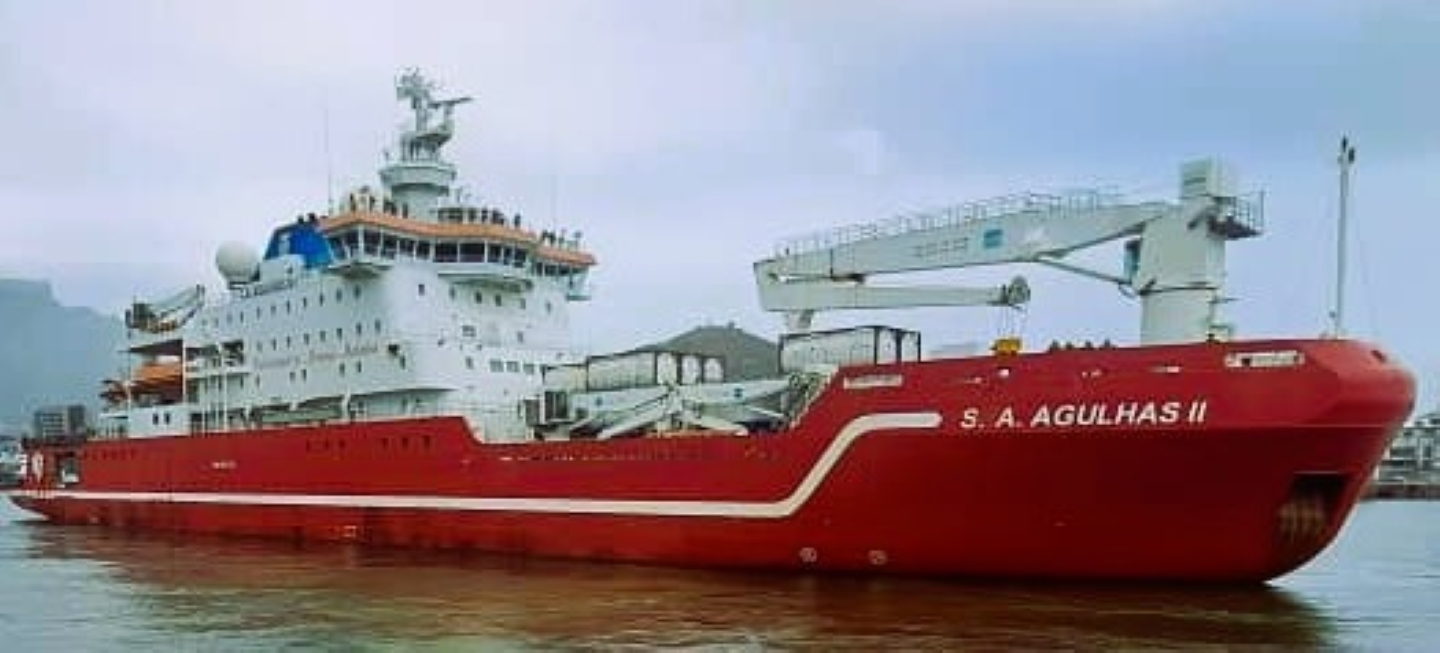 The SA Agulhas II plays a pivotal role in supporting research and exploration in one of the most extreme and least understood environments on Earth. South Africa’s station in Antarctica, SANAE IV Station, rely on the vessel’s annual voyages for everything from scientific supplies to food, equipment, and fuel. The vessel also delivers critical scientific personnel, scientists, and engineers who are essential for conducting experiments, research, and environmental monitoring on the frozen continent.
The SA Agulhas II plays a pivotal role in supporting research and exploration in one of the most extreme and least understood environments on Earth. South Africa’s station in Antarctica, SANAE IV Station, rely on the vessel’s annual voyages for everything from scientific supplies to food, equipment, and fuel. The vessel also delivers critical scientific personnel, scientists, and engineers who are essential for conducting experiments, research, and environmental monitoring on the frozen continent.
This year, the SA Agulhas II will carry a group of researchers to continue studies on climate change, marine biology, and glaciology, among other fields. Another essential aspect of this annual journey is the personnel exchange that occurs as part of the overwintering team rotation. The team that has spent the harsh winter months at the research stations in Antarctica will return home, while a new team will take their place for the upcoming year.
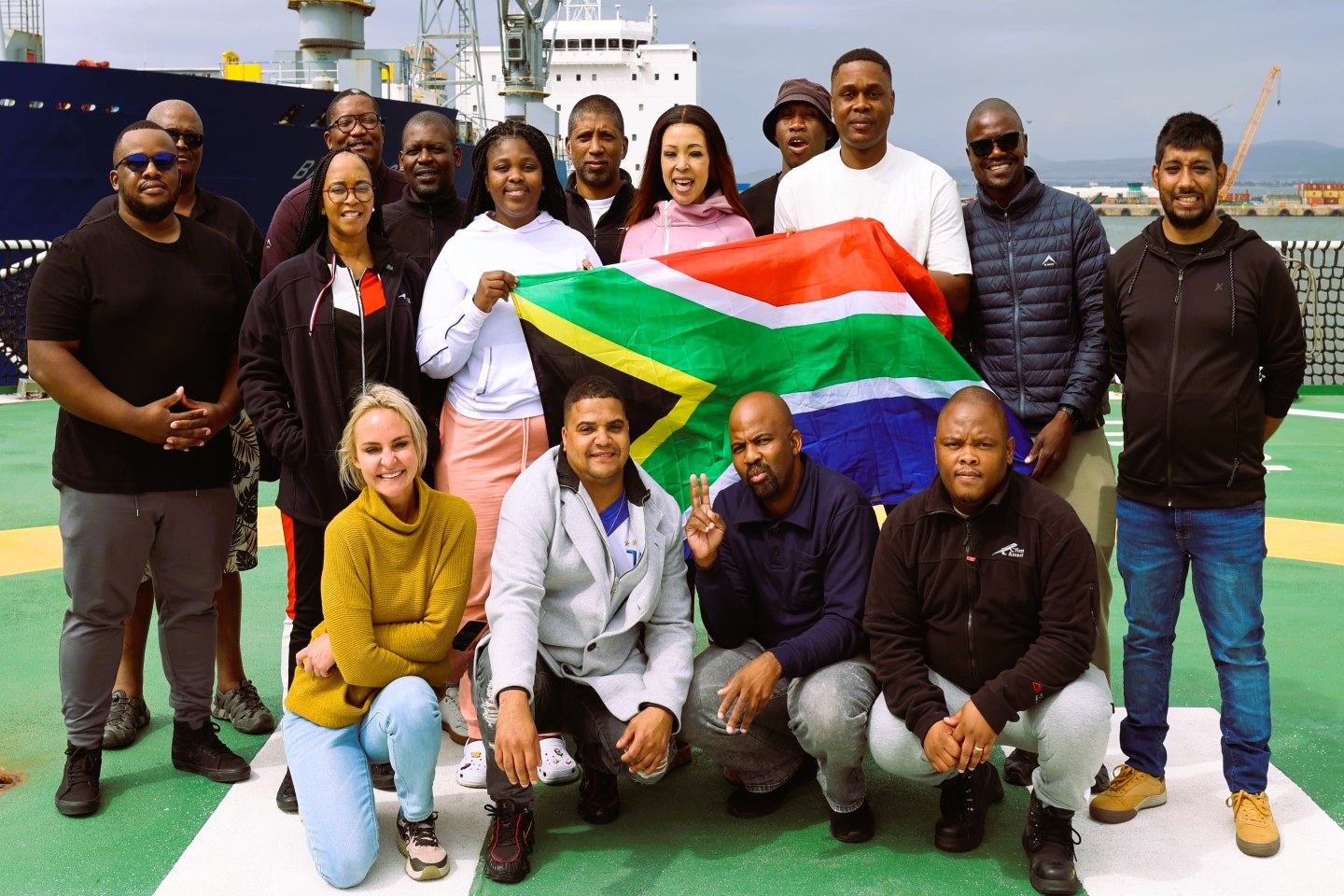 Above: SANAE64 Overwintering Team with DFFE Takeover Personnel.
Above: SANAE64 Overwintering Team with DFFE Takeover Personnel.
The overwintering teams are a group of exceptional individuals who endure the Antarctic winter—a period marked by freezing temperatures, months of darkness, and isolation. They are responsible for maintaining research stations, conducting experiments, and ensuring that the infrastructure is operational during the harshest months. The rotation ensures that the same team does not endure multiple seasons of isolation and provides an opportunity for fresh perspectives and new expertise.
The SA Agulhas II is not just a research vessel—it’s a symbol of South Africa’s commitment to the exploration of one of the most remote places on Earth. The vessel’s crew is tasked with navigating the seas and icy waters that surround Antarctica, with the ship braving some of the world’s roughest weather and icy waters. The crew ensures the vessel stays operational throughout the voyage, providing safety and support to everyone on board. This year, as always, the vessel crew will work tirelessly to ensure that all operations go smoothly. They will transport cargo, assist scientists with their research, and ensure the safe arrival and departure of personnel.
We wish the SA Agulhas II, its crew, the overwintering team, and all personnel embarking on this important voyage a safe and successful journey to the frozen south.

by Ria Olivier | Oct 22, 2024 | Antarctica, Research, SA Polar Research Infrastructure, SANAP
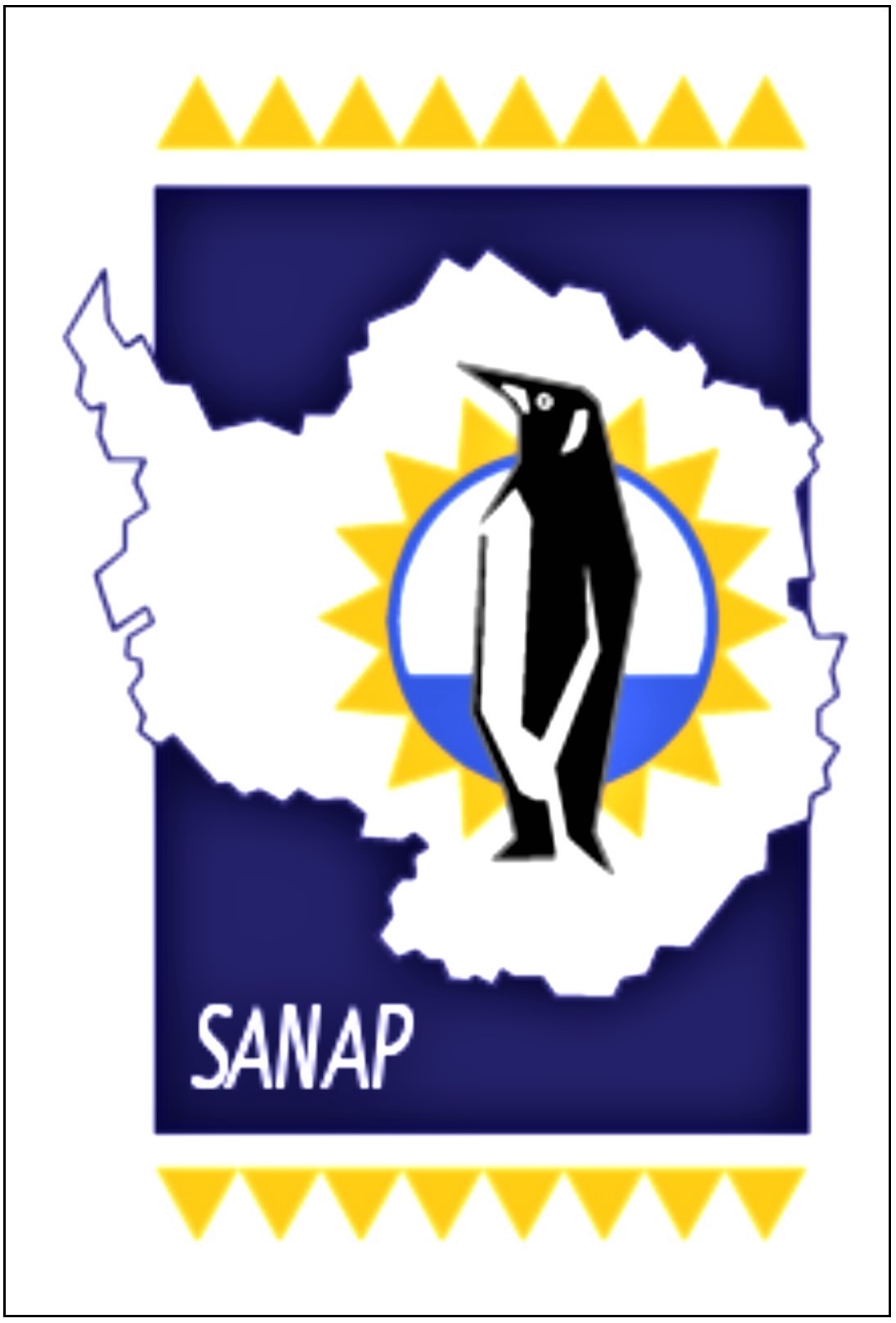
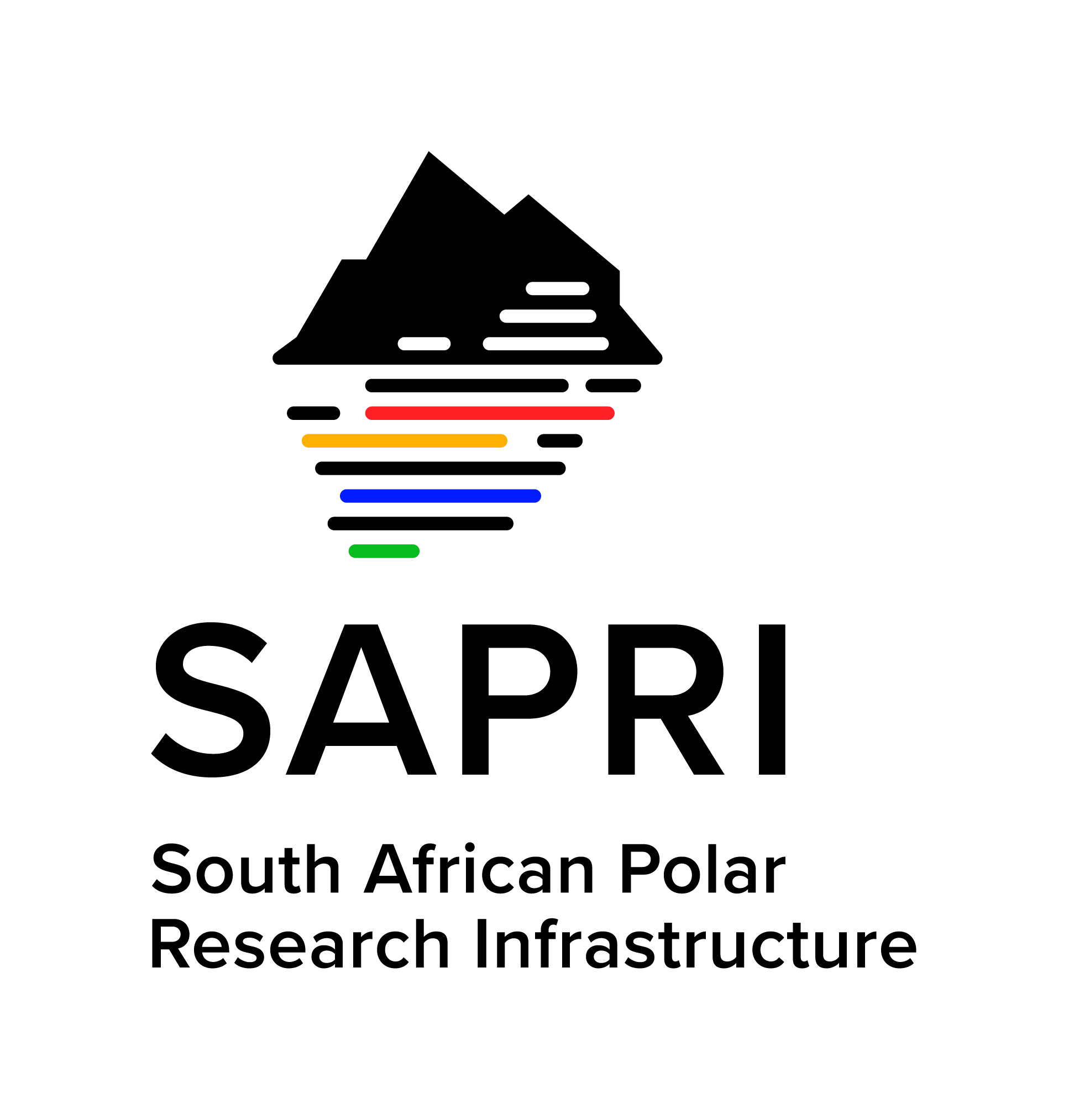 Antarctica, a pristine and remote frontier of scientific discovery, has long been a region of international interest for climate research, biodiversity, and understanding global environmental changes. In a recent meeting, held at SAEON Egagasini Node in Cape Town the event brought together South African National Antarctic Programme (SANAP) researchers and South African Polar Research Infrastructure (SAPRI) personnel to discuss how we can collaborate with the Arctic and Antarctic Research Institute (AARI) to share resources, infrastructures and expertise to protect and study this unique region.
Antarctica, a pristine and remote frontier of scientific discovery, has long been a region of international interest for climate research, biodiversity, and understanding global environmental changes. In a recent meeting, held at SAEON Egagasini Node in Cape Town the event brought together South African National Antarctic Programme (SANAP) researchers and South African Polar Research Infrastructure (SAPRI) personnel to discuss how we can collaborate with the Arctic and Antarctic Research Institute (AARI) to share resources, infrastructures and expertise to protect and study this unique region.
 Attending in Person, Prof Juliet Hermes, Prof Marcello Vichi, Dr Anne Treasure, Ria Olivier, Dr Robyn Verrinder, Thomas Mtontsi, Steve Tebele, Jonathan Ward, Mark McKechnie, Rabia Mathakutha, Dr Sandy Thomalla, Dr Alexander Makarov, Dr Maxim Tatarkin
Attending in Person, Prof Juliet Hermes, Prof Marcello Vichi, Dr Anne Treasure, Ria Olivier, Dr Robyn Verrinder, Thomas Mtontsi, Steve Tebele, Jonathan Ward, Mark McKechnie, Rabia Mathakutha, Dr Sandy Thomalla, Dr Alexander Makarov, Dr Maxim Tatarkin
The meeting was focused on several aspects, including enhancing scientific cooperation in the Antarctic, and exploring ways to share logistical and research capacities. Both SANAP and AARI have a long history of involvement in Antarctic studies, and these discussions is a step forward in research and innovation collaboration.
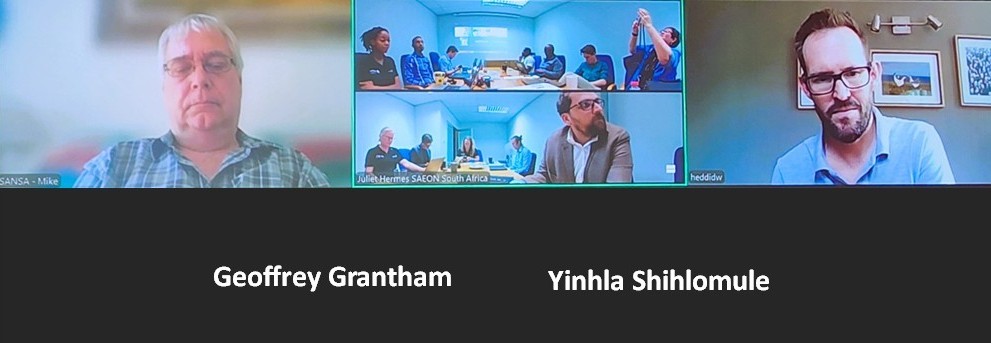 The meeting was in hybrid format and was attended online by Dr Michael Kosch, Dr David Hedding, Dr Geoff Grantham and Yinhla Shihlomule
The meeting was in hybrid format and was attended online by Dr Michael Kosch, Dr David Hedding, Dr Geoff Grantham and Yinhla Shihlomule
Dr Makarov introduced the activities, research and infrastructure of the AARI. He provided context to the visit and introduced AARI science and collaboration strategy. Highlights were the major directions of AARI are Meteorology, glaciology, Sea-ice research, Ice physics, ocean-atmosphere interaction, polar geography, geophysics, oceanography, interaction of ship hull with sea-ice, multi-year permafrost, hydrochemistry and hydrology of estuaries and water resources
Short presentations by the South African delegation with discussions followed (Presentations available on ALSA archive)
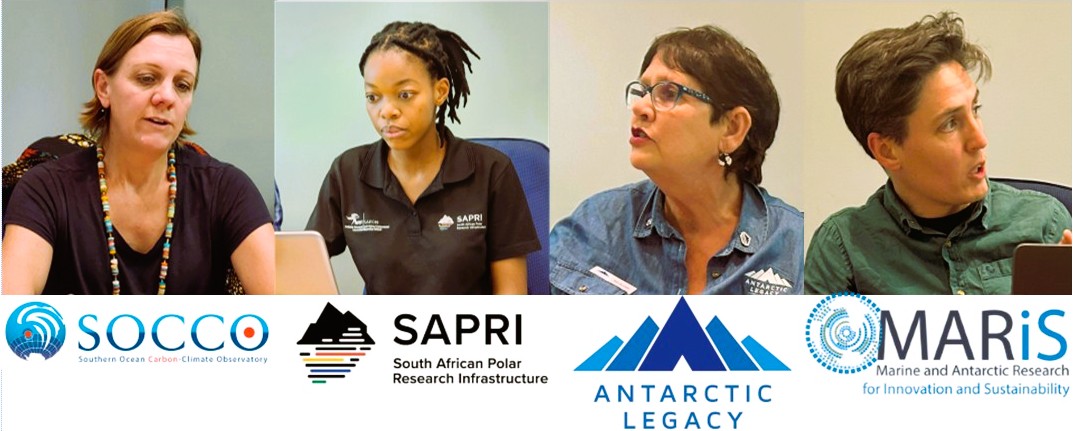 The in-person presenters that started the South African Discussions and presenatations: Dr Sandy Thomalla – SOCCO, Rabia Mathakutha – SAPRI, Ria Olivier- ALSA, Dr Robyn Verrinder-MARIS
The in-person presenters that started the South African Discussions and presenatations: Dr Sandy Thomalla – SOCCO, Rabia Mathakutha – SAPRI, Ria Olivier- ALSA, Dr Robyn Verrinder-MARIS
 The following presentations were done:
The following presentations were done:
- SOCCO: South Africa’s ocean-climate science and innovation programme:
Taking ocean climate science to society. Sandy Thomalla.
- The South African Polar Research Infrastructure. Rabia Mathakutha
- An Overview of the Antarctic Legacy of South Africa Ria Olivier
- Antarctic MIZ Observations: Interdisciplinary approaches to resolve seasonal sea-ice variability. Robyn Verrinder
- Geology of Western Dronning Maud Land, Antarctica – a brief history of Geological Evolution insights. Geoffrey Grantham
- SANAP Geological Research program 2024-2026 in western Dronning Maud Land, Antarctica. Geoffrey Grantham
- Landscape and climate interactions in the sub-Antarctic. David Hedding
- SuperDARN HF radar at SANAE, Instrument infrastructure for space weather research. Michael Kosch
- SANSA – Jonathan Ward
- BRICS-RELAY and Antarctica InSync. Marcello Vichi
Through collaboration, we are expanding our ability to understand and protect one of the planet’s most critical ecosystems as Antarctica holds answers to some of the world’s biggest environmental questions, and through collaboration, we can unlock those answers.”
 Dr Makarov present a gift to Prof Juliet Hermes of the ice resistant platform ‘North Pole’
Dr Makarov present a gift to Prof Juliet Hermes of the ice resistant platform ‘North Pole’
The discussion between AARI and SANAP and SAPRI signals a collaboration for Antarctic research, through shared resources, expertise, and data, both nations are poised to make significant contributions to global climate science. As the world watches the impacts of climate change unfold, this international collaboration offers hope for a deeper understanding of our planet and the preservation of its most fragile regions.


 Each year, on March 23rd, the global community observes World Meteorological Day, commemorating the establishment of the World Meteorological Organization (WMO) in 1950. This day highlights the pivotal role meteorology plays in ensuring the safety and well-being of societies worldwide. In 2025, we focus on the indispensable contributions of meteorologists stationed at the South African National Antarctic Programme’s (SANAP) remote research stations: SANAE IV in Antarctica, Marion Island, and Gough Island.
Each year, on March 23rd, the global community observes World Meteorological Day, commemorating the establishment of the World Meteorological Organization (WMO) in 1950. This day highlights the pivotal role meteorology plays in ensuring the safety and well-being of societies worldwide. In 2025, we focus on the indispensable contributions of meteorologists stationed at the South African National Antarctic Programme’s (SANAP) remote research stations: SANAE IV in Antarctica, Marion Island, and Gough Island. On this World Meteorological Day, we extend our gratitude to the meteorologists of SANAP’s overwintering teams. Their unwavering commitment and resilience in some of the most challenging environments ensure that we continue to deepen our understanding of Earth’s atmospheric processes, ultimately contributing to the safety and well-being of societies worldwide.
On this World Meteorological Day, we extend our gratitude to the meteorologists of SANAP’s overwintering teams. Their unwavering commitment and resilience in some of the most challenging environments ensure that we continue to deepen our understanding of Earth’s atmospheric processes, ultimately contributing to the safety and well-being of societies worldwide. SANAE IV (South African National Antarctic Expedition IV): Located at 71°S, 2°W in Antarctica, SANAE IV. Meteorological observations are conducted year-round, providing critical data on atmospheric conditions in this remote region.
SANAE IV (South African National Antarctic Expedition IV): Located at 71°S, 2°W in Antarctica, SANAE IV. Meteorological observations are conducted year-round, providing critical data on atmospheric conditions in this remote region.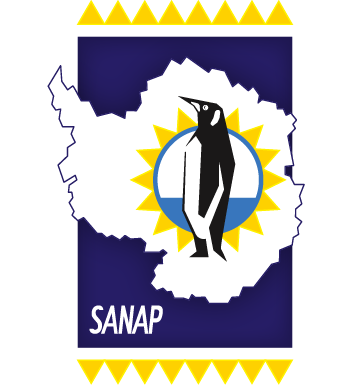

 Meet the SANAE 64 Team
Meet the SANAE 64 Team SNR Meteorological Technician / Team Leader: Mbulaheni Kelcey Maewashe – SAWS
SNR Meteorological Technician / Team Leader: Mbulaheni Kelcey Maewashe – SAWS

 The Department of Forestry, Fisheries and the Environment is pleased to announce the upcoming voyage schedule for the S.A. Agulhas II for the 2025/2026 season. This state-of-the-art polar research and supply vessel will continue its vital role in supporting South Africa’s research stations in Antarctica and the sub-Antarctic islands. Below is the planned itinerary provided by the Department of Forestry Fisheries and the Environment:
The Department of Forestry, Fisheries and the Environment is pleased to announce the upcoming voyage schedule for the S.A. Agulhas II for the 2025/2026 season. This state-of-the-art polar research and supply vessel will continue its vital role in supporting South Africa’s research stations in Antarctica and the sub-Antarctic islands. Below is the planned itinerary provided by the Department of Forestry Fisheries and the Environment:

 Every year, the South African vessel, the SA Agulhas II, embarks on a journey to Antarctica, marking the beginning of its annual research and supply voyage. This critical mission is not only a symbol of South Africa’s dedication to scientific research but also a lifeline for the overwintering team, personnel rotations, and vital logistical support for stations on the frozen continent. On the 15th of December, the SA Agulhas II departed from Cape Town, South Africa, bound for Antarctica. This voyage marks the commencement of a multifaceted operation, which encompasses research, supply deliveries, and personnel exchanges between Antarctica and the rest of the world. Left: Shiraan Watson DCO of DFFE
Every year, the South African vessel, the SA Agulhas II, embarks on a journey to Antarctica, marking the beginning of its annual research and supply voyage. This critical mission is not only a symbol of South Africa’s dedication to scientific research but also a lifeline for the overwintering team, personnel rotations, and vital logistical support for stations on the frozen continent. On the 15th of December, the SA Agulhas II departed from Cape Town, South Africa, bound for Antarctica. This voyage marks the commencement of a multifaceted operation, which encompasses research, supply deliveries, and personnel exchanges between Antarctica and the rest of the world. Left: Shiraan Watson DCO of DFFE  The SA Agulhas II plays a pivotal role in supporting research and exploration in one of the most extreme and least understood environments on Earth. South Africa’s station in Antarctica, SANAE IV Station, rely on the vessel’s annual voyages for everything from scientific supplies to food, equipment, and fuel. The vessel also delivers critical scientific personnel, scientists, and engineers who are essential for conducting experiments, research, and environmental monitoring on the frozen continent.
The SA Agulhas II plays a pivotal role in supporting research and exploration in one of the most extreme and least understood environments on Earth. South Africa’s station in Antarctica, SANAE IV Station, rely on the vessel’s annual voyages for everything from scientific supplies to food, equipment, and fuel. The vessel also delivers critical scientific personnel, scientists, and engineers who are essential for conducting experiments, research, and environmental monitoring on the frozen continent. Above: SANAE64 Overwintering Team with DFFE Takeover Personnel.
Above: SANAE64 Overwintering Team with DFFE Takeover Personnel.

 Antarctica, a pristine and remote frontier of scientific discovery, has long been a region of international interest for climate research, biodiversity, and understanding global environmental changes. In a recent meeting, held at SAEON Egagasini Node in Cape Town the event brought together
Antarctica, a pristine and remote frontier of scientific discovery, has long been a region of international interest for climate research, biodiversity, and understanding global environmental changes. In a recent meeting, held at SAEON Egagasini Node in Cape Town the event brought together  Attending in Person, Prof Juliet Hermes, Prof Marcello Vichi, Dr Anne Treasure, Ria Olivier, Dr Robyn Verrinder, Thomas Mtontsi, Steve Tebele, Jonathan Ward, Mark McKechnie, Rabia Mathakutha, Dr Sandy Thomalla, Dr Alexander Makarov, Dr Maxim Tatarkin
Attending in Person, Prof Juliet Hermes, Prof Marcello Vichi, Dr Anne Treasure, Ria Olivier, Dr Robyn Verrinder, Thomas Mtontsi, Steve Tebele, Jonathan Ward, Mark McKechnie, Rabia Mathakutha, Dr Sandy Thomalla, Dr Alexander Makarov, Dr Maxim Tatarkin The meeting was in hybrid format and was attended online by Dr Michael Kosch, Dr David Hedding, Dr Geoff Grantham and Yinhla Shihlomule
The meeting was in hybrid format and was attended online by Dr Michael Kosch, Dr David Hedding, Dr Geoff Grantham and Yinhla Shihlomule The in-person presenters that started the South African Discussions and presenatations: Dr Sandy Thomalla – SOCCO, Rabia Mathakutha – SAPRI, Ria Olivier- ALSA, Dr Robyn Verrinder-MARIS
The in-person presenters that started the South African Discussions and presenatations: Dr Sandy Thomalla – SOCCO, Rabia Mathakutha – SAPRI, Ria Olivier- ALSA, Dr Robyn Verrinder-MARIS The following presentations were done:
The following presentations were done:  Dr Makarov present a gift to Prof Juliet Hermes of the ice resistant platform ‘North Pole’
Dr Makarov present a gift to Prof Juliet Hermes of the ice resistant platform ‘North Pole’
